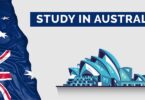From high-rated global institutions, a wide assortment of programs and study regions, and elevating year-on-year locations for foreign students, Australia is among the best locations to study and relocate overseas.
ALL YOU NEED TO UNDERSTAND ABOUT AUSTRALIAN EDUCATION
Australia provides a wide range of study alternatives for foreign students, with over 1,100 universities and 22,000 programs to select from. With professional programs in Medicine, Information Technology, and others, there is bound to be a program ideal for your appeal and prospective permanent residency routes.
SUBMIT APPLICATIONS:UNSW Graduate Scholarships 2024/2025 in Australia (Funded)
Regardless of what or how long you intend to study, Australia’s policies facilitate quality education and coverage for foreign students, each identified worldwide by enterprises and companies.
STEP-BY-STEP DIRECTION TO STUDY IN AUSTRALIA
Step one: research your destination
Consider what you would prefer to study, the institution you would like to attend, and the town that benefits your lifestyle and budget. A brief direction to some of the biggest cities in Australia is offered below:
- Melbourne: This city houses the second top-rated institution in Australia, the University of Melbourne, and also boasts some of the ideal cafe culture, bars, and nightlife worldwide.
- Sydney: Sydney is coming in a close third with the University of Sydney. It also has some of the most fascinating beaches nationally and a surplus of postcard allurements, such as the Sydney Harbor Bridge and Bondi Beach.
- Brisbane has the fifth-best institution in Australia, the University of Queensland. Its lifestyle is more laid-back, with rainforests and humid temperatures.
- Adelaide is usually described as a little rendition of Melbourne because it has a similar food and wine culture but a smaller and quieter setup. It also brags to be among the top 10 institutions in Australia, which is the University of Adelaide.
- Perth also hosts a top 10 institution, The University of Western Australia. It has open spots, arguably the best beaches in Australia, and can shave some time off flights overseas to some locations because of its geographic region.
Have an idea of the subject parts that appeal to you the most. You might also want to look at some program descriptions, institution checks, and their locations. Begin a wish list of your choices and start to narrow your pick.
Step two: consult a counselor
When you are prepared, book an appointment with a counselor. Seek counselors who are skillfully verified, several of whom have also been foreign students. Seek for a friendly and loads of first-hand expertise recommendations and individual experience from various study destinations around the globe.
Discuss your wish list and program choices with him, making your appointment a starting point. Your counselor will guide you through all the big and small details to ensure the ideal feasible fit between you, your future institution, and your field of study.
Step three: Make your application
After you have picked your program and institution, it is time to make an application. Your counselor will assist with your application. They will guide you through. Your counselor will contact your selected institution to ensure they assist your application and enhance your approval prospects.
You are required to take an English exam to be eligible for your program, and you are required to practice well to get good grades. In exams like the IELTS, you will require good grammar and spelling and also a wide range of vocabulary. Most good English speakers can have bad habits, so remember to practice these skills.
Step four: accept your offer
When the institution receives your application, it will be evaluated, and you will be informed of the outcome. For postgraduate programs, this can take weeks or more.
If you succeed in your application, you will receive an offer letter and acceptance form. Before approving your offer, your counselor will review it carefully with you and check for any required changes.
If you are admitted to more than one institution, they will assist you in determining which alternative is ideal for you. It is normal to be nervous as you await the results of your program applications.
Step five: practice your English proficiencies
It is often a good idea to practice your English proficiencies to ensure you can keep up with what your tutors say, especially if English is not your first language. Attempt watching Television news and talk shows and listening to podcasts where the English is more official.
Learning the local slang in Australia can be enjoyable, as there are various words and accents, even though they all communicate in English.
Step six: make an application for a student visa
Having been admitted, it is time to apply for your student visa. Your counselor can assist you with some details to ensure you are well-equipped to navigate this procedure with the endorsed migration units.
COST OF STUDY IN AUSTRALIA
The expenses of studying in Australasia will be based on the university and the study level you choose. Below is a list that provides a demonstration of the range of program expenses for many kinds of certifications.
- Institution: $7,800 to $30,000
- English language studies: about $300 weekly based on the program duration.
- Professional studies and internship: Certificates I to IV, Diploma and Advanced Diploma $4,000 to $22,000.
- Undergraduate bachelor program: $15,000 to $33,000
- Postgraduate masters program: $20,000 to $37,000.
- Doctoral program: $14,000 to $37,000
Note: this does not include high-worth programs, such as veterinary and medical studies. Please contact the school webpage directly to see the expenses for these programs.




